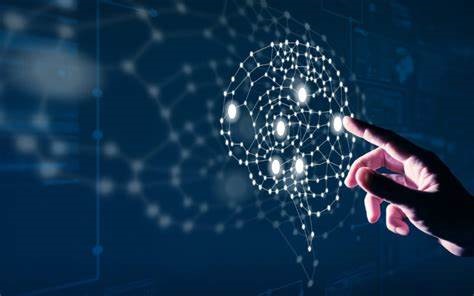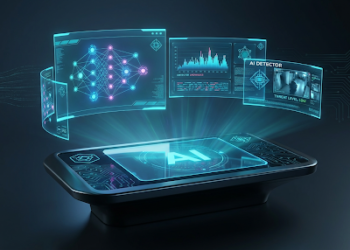One of the most potent technologies ever developed, artificial intelligence has completely changed every sector of the economy and how companies conduct business. Businesses should recognize the benefits of a human element and an innovative approach as they investigate novel methods to leverage artificial intelligence to boost productivity and efficiency. You may accelerate your career in the AI field and assist your company’s growth and success by enrolling in an AI and machine learning course, which will teach you the most fundamental to advanced skill sets and AI tools. Now, let us find out some of the top 10 applications of AI in 2024
I. Virtual Assistants
Virtual assistants or AI assistants are AI-powered software applications that can perform tasks or services for people. For example, virtual assistants like Amazon’s Alexa, Apple’s Siri, and Google Assistant can help users by answering queries, controlling smart home devices on command as well as setting reminders. They play an active role in revolutionizing the digital marketing industry.
With the growing popularity of natural language processing (NLP), virtual assistants have become increasingly adept at comprehending human inquiries and implicit attitudes. As a result, they can respond to consumer problems twenty-four hours a day, seven days a week, and have casual, human-like discussions with customers that give them the impression that they are interacting with a customer care representative. This can increase productivity by giving clients timely assistance, saving them time, and assisting them in getting better results. Virtual assistants can help beginners by providing answers to their queries, guiding them and helping them learn new skills and stay organized. They can just type in requests or say commands and get multiple things done like scheduling appointments, setting reminders, playing music, and even sending messages.
II. Face Recognition Technology
Face Recognition Technology has great applications to detect human emotions. The ability to discern human emotions is a remarkable application of face recognition technology. Artificial intelligence (AI)-driven facial recognition technology is an algorithm-based system that combines developments in computer vision and machine learning with linguistics and psychology to identify and map out facial traits, thus creating a digital map of the individual. The technology makes it possible to decipher and understand body language, facial expressions, and other cues. By utilising AI facial recognition technology, businesses may better understand their clients and their demands. This enables them to offer superior goods and services that will guarantee the highest level of client pleasure. An example of the application of facial recognition technology is in the retail industry. Companies can analyze the facial expressions and body language of customers in stores. This allows retailers to tailor their product placements to meet the needs of their customers.
III. Predictive Analytics
Predictive analytics uses data, algorithms, statistics and machine learning to predict potential outcomes based on analyzing patterns from historical data. AI-enabled data analytics solutions provide businesses with an effective tool to target customers and competitors. With the use of data insights, businesses can maximize inventory, reduce waste, save costs, and supply goods and services in line with customer demand. The intelligence, speed, scalability, and accuracy of data analysis can all be improved by leveraging AI’s capability. In finance, predictive analytics is used to predict market trends and identify potential investment opportunities.
IV. Chatbots
AI powered chatbot is a Natural language processing tool that is used to interact with people. AI powered chatbot is a Natural language processing tool that is used to interact with people. They can measure their emotional states and respond accordingly, providing consolation or encouragement when required. Emotionally-intelligent chatbots are used in businesses due to their ability to connect with customers. They analyze patterns in the data based on previous customer interactions and are able provide you information on the emotional profile of the customers. Thus, AI powered chatbots can assist customer service representatives or other employees in a company to communicate with the customers or clients in a way that is sensitive to their emotional state.
Chatbots are used by digital commerce platforms to improve consumer engagement. By decoding human language, natural language processing (NLP), artificial intelligence (AI) search engines, voice producing software, and chatbots are utilized to respond to client requests and demands. Personalization benefits customers and organizations by increasing sales and customer happiness.
V. Recommendation Systems
Intelligent, tailored recommendations, support when needed, unique membership advantages that allow you to earn loyalty points, and special offers, coupons, and surprises that promote stronger brand loyalty are just a few of the ways AI helps to create a better customer experience. Retailers are using AI and machine learning techniques to provide computers with real-time and historical customer data. This enables businesses to develop models that can intelligently predict results and provide you with personalized recommendations.
VI. Autonomous Vehicles
Autonomous vehicles are self-driving cars that uses AI and sensors to navigate roads without any human interference. Autonomous car navigation and driving are achievable with AI, negating the requirement for human intervention. In order to evaluate the surroundings and make the best decisions in the real world, more information is gathered with the help of sensors such as RADAR and LIDAR. The Tesla Model S is an autonomous vehicle, which can automatically change lanes, park itself, and navigate traffic.
VII. Healthcare
AI is improving medical diagnosis and treatment approaches, which is transforming the healthcare industry. AI can be used to identify early signs of illness and disease by identifying risk factors, causes, and other medical problems. By using data analytics, pertinent health information can be obtained that can improve patients’ treatment plans and lower the possibility of human error. With precise diagnosis and focused therapy regimens, personalized treatment plans help patients manage their illnesses.
With the use of AI, scientists and researchers can expedite and simplify the drug development process. AI has the potential to speed up the entire drug development process and contribute to the earlier introduction of innovative medications. This makes it easier to get therapies that can save lives more quickly.
AI has also revolutionized remote patient monitoring (RPM), making it possible for doctors to remotely check on patients’ vital signs and other symptoms. Examples of wearables with sensors that can pick up even the smallest changes in blood pressure, temperature, stress level, heart rate, and other medical data are fitness trackers and smartwatches. AI assists in identifying any anomalies that the human eye could miss. Doctors can use the RPM to receive alerts about their patients’ health issues on their cell phones. This helps medical providers anticipate possible health problems and develop plans to stop further deterioration in health.
VIII. Cybersecurity
When you are online, you open yourself up to cyberattacks. Effective cybersecurity procedures are thus the most crucial element in any business. Organizations can discover threats and abnormalities by identifying common patterns in system and network traffic by implementing security technologies with AI. You may improve your organization’s incident response, security testing, and training procedures with the use of this technology.
While AI can automate enterprise cybersecurity management procedures and handle data security needs, it can also seriously jeopardize cybersecurity postures. Some of the most widely used applications of AI in cybersecurity for enterprises are attack simulations, recommendations for contextualized security environments, and more sophisticated threat intelligence and hunting.
IX. Gaming
The gaming sector is the best example of a clever AI application because many adjustments are made to the result on this platform. AI is used in many different contexts, such as character development and game development. Artificial Intelligence in gaming refers to dynamic and flexible video game experiences. This kind of AI-powered, one-of-a-kind entertainment is usually produced by non-player characters or NPCs. NPCs behave artistically or cognitively as though a human player guided them. An NPC’s actions within the game world are controlled by the AI engine.
X. Education
With the help of AI, students can have personalized learning experiences. Digital platforms offer a unique-blended learning experience where students receive round the clock assistance from virtual mentors.
Conclusion
Artificial intelligence (AI) has many applications across various sectors and industries, and enrolling in AI ML courses or getting an AIOps Certification can help you understand these applications better. These technologies have the potential to decrease human labor by automating and managing tasks using computer algorithms. AI is already transforming industries and helping to resolve complex problems, and this trend will only increase.











































































